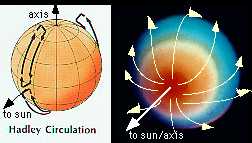This is diagram of circulation on the Earth (left), and Uranus (right).
Uranus Weather
The weather on earth can be described this way: air rises where it is warm (at the equator), and moves to where it is colder, (at the north pole).
Because Uranus lies on its side, with the north pole facing the sun for half a year, Uranus' weather cannot follow that basic pattern. The air would not rise at the equator because the equator never faces the sun.
You might also be interested in:
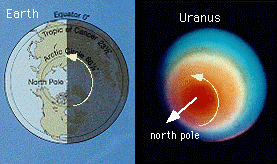
In this picture, the Earth and Uranus are both viewed from the top. In the picture of the Earth, the sun is shining from the side. The picture shows that part of the north pole is in daylight and part
...more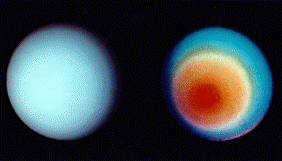
The clouds of Uranus, made of methane crystals, are found very low in the sky, and are difficult to find beneath the hazey smog of the pla net. False color is used, in the picture of Uranus to the right,
...more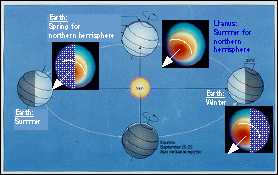
As a planet orbits the sun, if its rotation axis is tilted, the portion that is tilted toward the sun will receive an excess of sunlight and energy (summer), while the hemisphere which is tilted away from
...more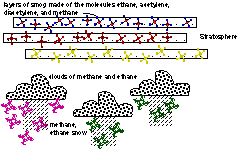
Besides methane, Uranus' atmosphere contains even more complex molecules. These molecules form layers of smog over the clouds of Uranus, as shown in the picture.
...more
The mesosphere of Uranus is a region of balance between warming and cooling. That essentially means that nothing happens there. Except for diffusion, the atmosphere is still. Upper reaches of the atmosphere,
...more
As on Earth, the atmosphere of Uranus consists of a troposphere, stratosphere, mesosphere, and thermosphere. The troposphere is the region where the visible clouds are to be found. The stratosphere, as
...more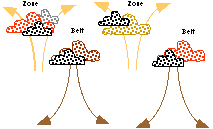
On Uranus, as on Jupiter, the winds in the belts and zones blow first in one direction, then in the other direction. The clouds rise up in a belt, and drop down in a zone, as shown in this picture. This
...more
